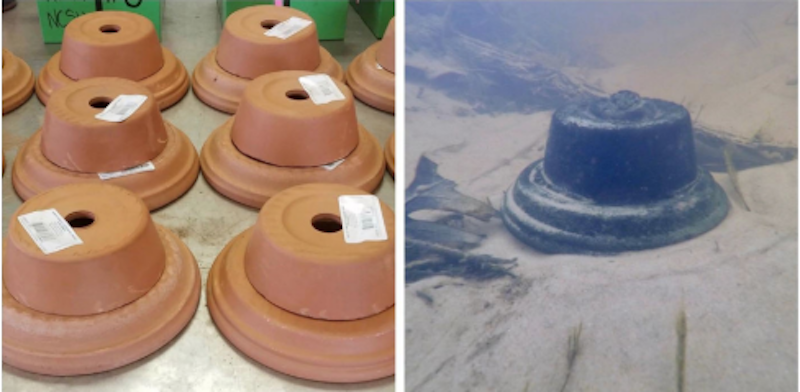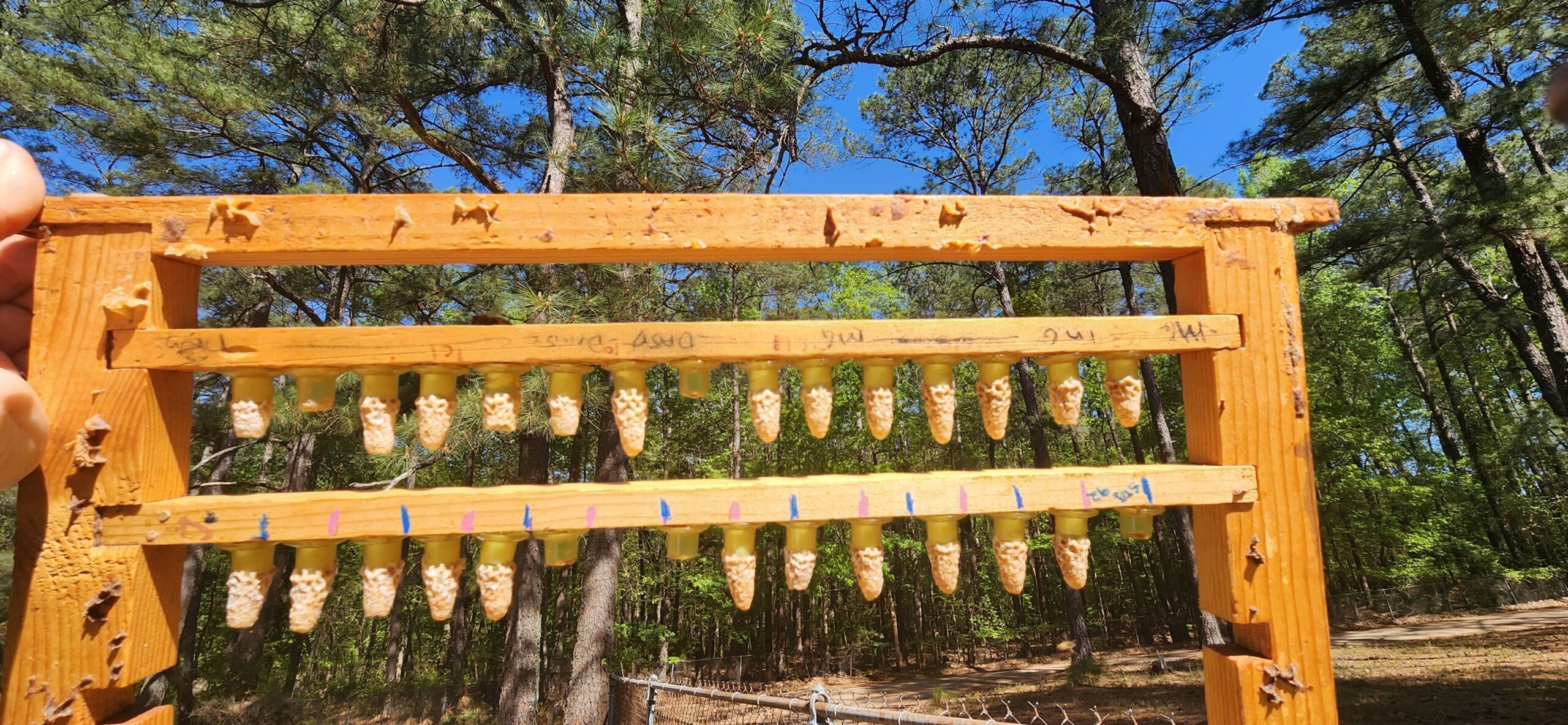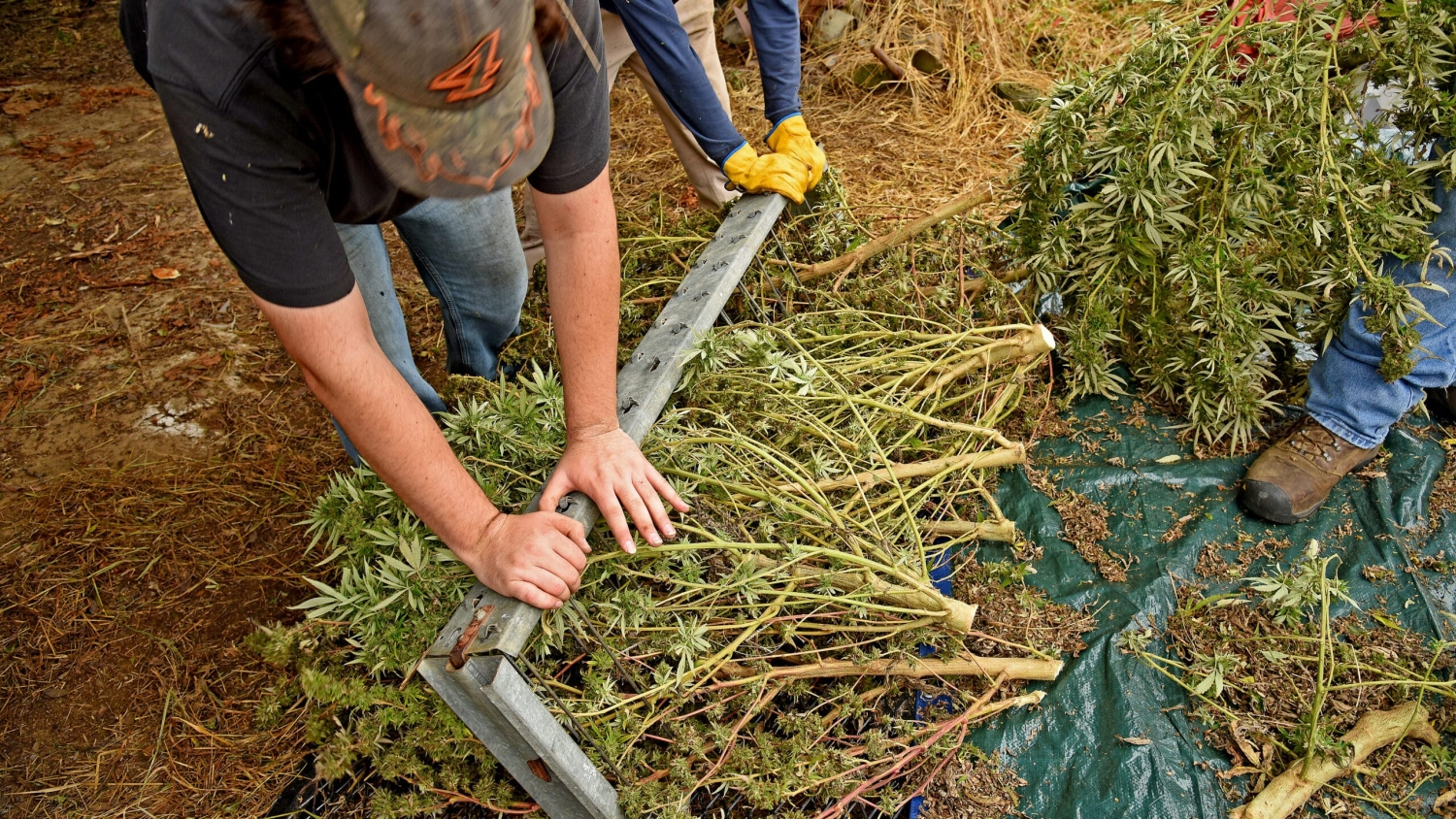If You Build It, They Will Come: Saving the Carolina Madtom

Carolina madtoms are small unimposing catfish homebodies, native to only two rivers in North Carolina. They were once as common as dragonflies along the Neuse and Tar rivers, but their populations have swiftly declined from generations of stream degradation and habitat loss. Altered streams will lose structural leaf packs, woody debris, and empty mussel shells, which are all features madtoms need to hide from predators, look for love, and raise their young.
What’s worse, madtoms have no gamefish value. Maxing out at just 5 inches, they don’t inspire the same angler ardor as their big catfish cousins, so few habitat management targets are designed to bolster this species. Undesirable and unassuming, Carolina madtoms have been unintentionally put on the fast-track to extinction.
In 2008, Wood & Nichols1 noted Carolina madtoms living in discarded aluminum cans and glass bottles during their fish surveys. However, the silver-lining to this pitiful observation was that madtoms were happily occupying artificial structures, albeit human litter. In 2010, Midway and Applied Ecology colleagues 2,3 tested Wood & Nichols observations in the lab by putting madtom-friendly structures made from flower pots into madtom tanks. There, too, they readily moved in–both in the lab and at stream sites where the structures were experimentally placed. Midway also found that the abundance of madtoms increased in the streams that had these artificial habitats, giving rise to the idea of “madtom motels.”

Rare species are – unsurprisingly – difficult to find, and researchers can’t assess how well a species is doing unless it can be regularly monitored. This inspired Applied Ecology’s Bobby Cope and Tom Kwak to work with agency and university colleagues and test if madtom motels could not only stop their decline but also be an ideal way to indirectly monitor their populations.
Madtom motels proved to be a resounding success on both fronts. Many of the motels were occupied after being in the river for only 14 days, and some were even inhabited by madtom males guarding eggs. The number of madtoms present in the motels yielded similar occurrence estimates to traditional snorkel surveys, meaning that the motels were equally as effective (and much less effort-intensive).
“The madtom motel approach is an artificial and temporary habitat enhancement to maintain and monitor Carolina madtom populations in their current imperiled condition,” Kwak notes, “but a long-term solution will require ecological restoration of their habitat to ensure their survival.”
The southeastern United States has incredible freshwater fish diversity, and each species is a unique resource to our natural heritage. While damage to natural cover continues to threaten madtom populations, Cope & Kwak’s collaborative research adds another vote of confidence towards the feasibility of saving this threatened North Carolina native.
The paper, “Evaluation of artificial cover units as a sampling technique and habitat enhancement for madtoms in rivers” was published in the North American Journal of Fisheries Management on July 11th, 2019. First author of the paper is W. Robert Cope, formerly of the Department of Applied Ecology and currently at Iowa State. Co-authors include Tom Kwak of the Department of Applied Ecology and the USGS, NC Coop Fish and Wildlife Research Unit, Tyler Black of RK&K, and Krishna Pacifici of the Department of Forestry and Environmental Resources at NC State.
1 Wood, C. J., and R. B. Nichols. 2008. Status assessment of the Carolina Madtom, final report. North Carolina Wildlife Resources Commission, Raleigh.
2 Midway, S. R., D. D. Aday, T. J. Kwak, and K. Gross. 2010. Cover pref- erence of the Carolina Madtom (Noturus furiosus), an imperiled endemic southeastern stream fish. Journal of Freshwater Ecology 25:151–154.
3 Midway, S. R., T. J. Kwak, and D. D. Aday. 2010. Habitat suitability of the Carolina Madtom, an imperiled, endemic stream fish. Transactions of the American Fisheries Society 139:325–338.



That’s right, Gerald! Removing a single habitat stressor will not solve imperilment the species. And it’s not practical to install artificial structures throughout two large river basins of the Carolina Madtom’s range. The only sustainable solution is to holistically research and mitigate all of the physical biotic stressors that you list to enhance the overall habitat of the species. Tactical measures can serve as short-term band-aids, but we as a society have to agree that saving this little fish species is important enough to take the necessary actions to do it!
Glad to see this creative, inexpensive, and highly effective measure to create breeding sites, to replace the large empty mussel shells that N. furiosus formerly relied on. Of course the loss of mussels is only one of several factors in the madtom’s decline: there’s also flow alteration, cutting of stream-side forests, stream-bank erosion, sediment, urban and agricultural runoff pollution, changes in available insect prey, non-native introduced species, etc …